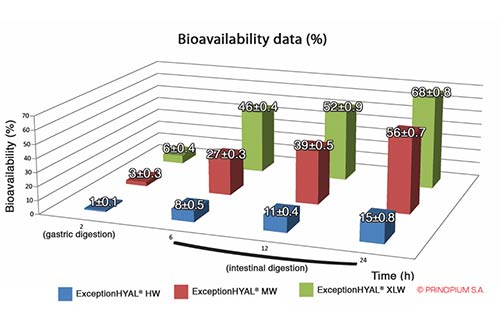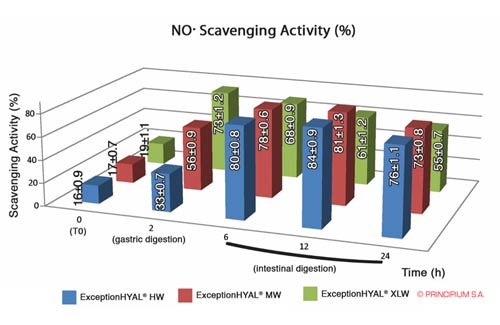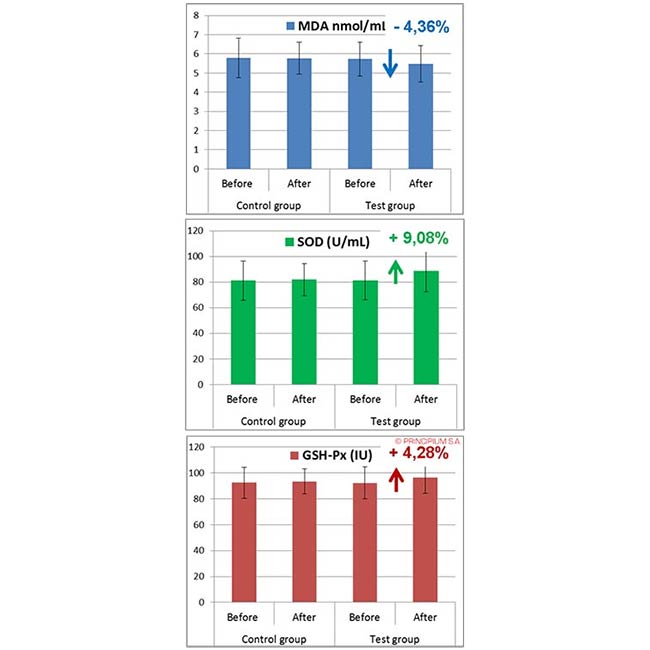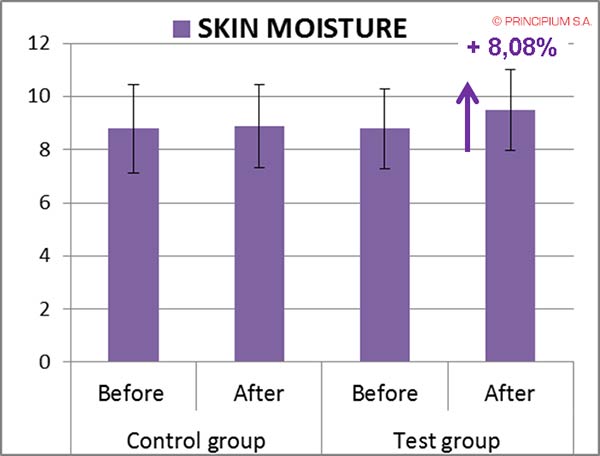The biological functions of Hyaluronic Acid include maintenance of the elastoviscosity of the liquid connective tissues, such as joint synovial and eye vitreous fluid, control of tissue hydration and water transport, supramolecular assembly of proteoglycans in the extracellular matrix and numerous receptor-mediated roles in cell detachment, mitosis, migration, tumor development and metastasis, and inflammation. The unique viscoelastic nature of Hyaluronic Acid along with its biocompatibility and non-immunogenicity has led to its use in a number of clinical applications, including the supplementation of joint fluid in arthritis, as a surgical aid in eye surgery, and to facilitate the healing and regeneration of surgical wounds.
In Vitro Bio-Availability Study
Different MW (XLW, MW, HW)
0 – 2 h: gastric transit
> 4h: intestinal transit
Extended bio-availability studies on the Hyaluronic Acid of HYALURMED were conducted in physiologic conditions by using dialysis tubing (DT) procedure and quantitative determination of HA by spectrophotometric method.
Outcome: High levels of bio-availability of HA during gastric abd intestinal transit.
Best Performance:
XLW>MW>HW
⇒ In agreement with in vivo test

IN VITRO NITRIC OXIDE RADICAL (NO∙) SCAVENGING ASSAY

In Vitro, Different MW (XLW, MW, HW)
0 – 2 h: gastric transit
> 4h: intestinal transit
Outcome: Increased levels of anti-inflammatory activity of Hyaluronic Acid before (intrinsic) and after (activated) gastro-intestinal absorption in physiologic conditions by in vitro nitric oxide radical (NO∙) scavenging assay.
Best Performance:
Intrinsic: all MW are comparable
After digestion: MW > HW > XLW
 English (UK)
English (UK)  Ελληνικά
Ελληνικά  Russian
Russian  Spanish
Spanish  Slovenčina
Slovenčina  Czech Republic
Czech Republic  Arabic
Arabic  Français
Français 



